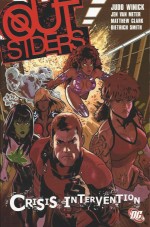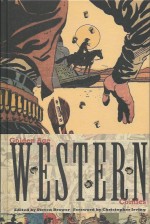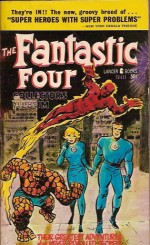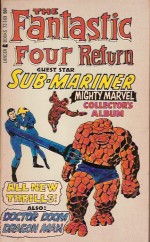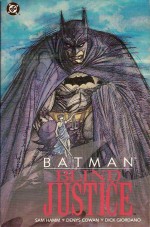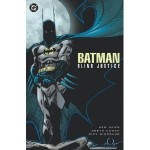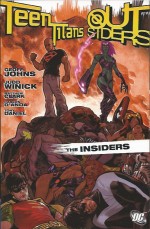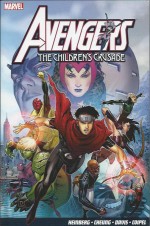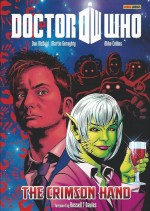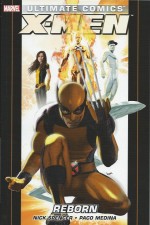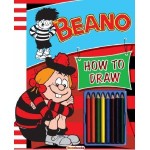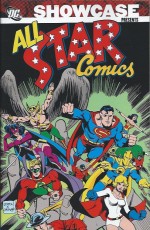
By Gerry Conway, Paul Levitz, Wally Wood, Joe Staton & various (DC Comics)
ISBN: 978-0-85768-810-0
In the torrid and turbulent 1970s many of the Comics industry’s oldest publishing ideas were finally laid to rest. The belief that characters could be “over-exposed†was one of the most pernicious and long-lasting (although it never hurt Superman, Batman or the original Captain Marvel), garnered from years of experience in an industry which lived or died on that fractional portion of pennies derived each month from the pocket-money and allowances of children which wasn’t spent on candy, toys or movies.
By the end of the 1960s comicbook costs and prices were inexorably rising and a proportion of titles – especially the newly revived horror stories – were consciously being produced for older readerships. Nearly a decade of organised fan publications and letter writing crusades had finally convinced publishing bean-counters what editors already knew: grown-ups avidly read comics too; they would happily spend more than kids and, most importantly, they wanted more, more, more of what they loved.
Explicitly: If one appearance per month was popular, extras, specials and second series would be more so. By the time Marvel Wunderkind Gerry Conway was preparing to leave The House of Ideas, DC was willing and ready to expand its variegated line-up with some oft-requested fan-favourite characters.
Paramount among these was the Justice Society of America, the first comicbook super-team and a perennial gem whose annual guest-appearances in the Justice League of America had become an inescapable and beloved summer tradition.
Thus in 1976 Writer/Editor Conway marked his DC tenure (where he had first broken in to the game by writing horror shorts for Joe Orlando) by reviving All Star Comics with number #58; in 1951 as the first Heroic Age ended the original title had transformed overnight into All Star Western with that number running for a further decade as the home of such cowboy crusaders as Strong Bow, the Trigger Twins, Johnny Thunder and Super-Chief. If you’re interested, among the other revivals/introductions in “Conway’s Corner†were Blackhawk, Plastic Man, Secret Society of Super-Villains, Freedom Fighters, Kobra, Blitzkrieg – and many others
Set on the parallel world of Earth-2 and in keeping with the editorial sense of ensuring that the series was relevant to young readers too, Conway reintroduced the veteran team and leavened it with a smattering of teen heroes, combined into a contentious, generation-gap fuelled “Super Squadâ€.
The youngsters included Robin (already a JSA member since the mid 1960s – as per Showcase Presents the Justice League of America volume 3), Sylvester Pemberton, AKA The Star-Spangled Kid (in actuality a boy-hero from the 1940s who had spent decades lost in time) and a busty young nymphet who quickly became the feisty favourite of a generation of growing boys: Kara Zor-L; soon to become infamous as the “take-charge†dynamo Power Girl.
This superb titanic monochrome volume gathers the four year run of the JSA from the late 1970s into a sublime showcase of different, ever-changing times and includes All-Star Comics #58-74, the series’ continuation and conclusion from giant anthology title Adventure Comics #461-466 plus the seminal DC Special #29 which, after almost four decades, at last provided the team with an origin…
The action begins with ‘Prologue’ – a three-page introduction, recap and summation of the Society’s history and the celestial mechanics of Alternate Earths, by Paul Levitz, Joe Staton & Bob Layton From Adventure #461 (January/February 1979) outlining the history and mechanics of the alternate Earths, after which the two-part debut tale from All- Star Comics #58 (January/February 1976 by Conway, Ric Estrada and Wally Wood) found newly-inducted Pemberton chafing at his time-lost plight and revelling in his new powers (he had been given a cosmic power device by retired veteran Starman) when a crisis propelled him and elder heroes Flash, Dr. Mid-Nite, Wildcat, Hawkman, Green Lantern and Dr. Fate into a three-pronged calamity devastating Seattle, Cape Town and Peking (which you youngsters now know as Beijing) with man-made natural disasters.
The veterans split up but were overwhelmed, giving the new kids a chance to shine in ‘All Star Super-Squad’. With the abrasive, impatient Power Girl in the vanguard the entire team was soon on the trail of old foe Degaton and his mind-bending ally in the concluding ‘Brainwave Blows Up!’
Keith Giffen replaced Estrada in issue #60 for the introduction of a psychotic super-arsonist who attacked the squad just as the age-divide started to chafe and Power Girl began to tick off or “re-educate†the stuffy, paternalistic JSA elders in ‘Vulcan: Son of Fire!’.
The closing instalment ‘Hellfire and Holocaust’ saw the flaming fury mortally wound Dr. Fate before his own defeat, just as a new mystic menace was beginning to stir…
Conway’s last issue as scripter was #62’s ‘When Fall the Mighty’ as antediluvian sorcerer Zanadu attacked, whilst the criminal Injustice Gang opened their latest vengeful assault using mind-control to turn friend against friend…
The cast expanded with the return of Hourman and Power Girl’s Kryptonian mentor, but even they were insufficient to prevent ‘The Death of Doctor Fate’ (written by Paul Levitz and fully illustrated by the inimitable Wally Wood). Attacked on all sides, the team splintered: Wildcat, Hawkman and the Kryptonian Cousins tackling the assembled super-villains, Flash and Green Lantern searching Egypt for a cure to Fate’s condition, and Hourman, Mid-Nite and Star-Spangled Kid desperately attempting to keep their fallen comrade alive.
They failed and Zanadu attacked once more, almost adding the moribund Fate’s death-watch defenders to his tally until the archaic alien’s very presence called Kent Nelson back from beyond the grave…
With that crisis averted Superman made ready to leave but was embroiled in a last-minute, manic time-travel assassination plot (Levitz & Wood) which dragged the team and guest-star Shining Knight from an embattled Camelot in ‘Yesterday Begins Today!’ to the far-flung future and ‘The Master Plan of Vandal Savage’: a breathtaking spectacle of drama and excitement that signalled Wood’s departure from the series.
Joe Staton & Bob Layton had the unenviable task of filling his artistic shoes, beginning with #66 as ‘Injustice Strikes Twice!’ with the reunited team – sans Superman – falling prey to an ambush from their arch-enemies, whilst the emotion-warping Psycho-Pirate began to twist Green Lantern into an out-of-control menace determined to crush Corporate America beneath his emerald heel, which subsequently led to the return of Earth-2’s Bruce Wayne, who had retired his masked persona to become Gotham’s Police Commissioner.
The Injustice Society had monstrous allies who were revealed in ‘Attack of the Underlord!’ (All-Star Comics #67, July/Aug 1977) as a subterranean race of conquerors who nearly ended the team forever. Meanwhile Wayne’s plans to close down the JSA before their increasingly destructive exploits demolished his beloved city neared fruition…
The modern adventures pause here as the aforementioned case from DC Special #29 (September 1977) disclosed ‘The Untold Origin of the Justice Society’
In this extra-length epic Levitz, Staton & Layton, revealed the previously “classified†events which saw Adolf Hitler acquire the mystical Spear of Destiny in 1940 and immediately summon mythical Teutonic Valkyries to aid in the in 1940 invasion of Britain.
Alerted to the threat, American President Roosevelt, hampered by his country’s neutrality, asked a select band of masked mystery-men to lend their aid as non-political private citizens. In a cataclysmic escalation the struggle ranged from the heart of Europe, throughout the British Isles and even to the Oval office of the White House before ten bold costumed heroes finally – if only temporarily – stopped the Nazis’ evil plans…
Back in All Star #68 (October, 1977) the curvy Kryptonian was clearly becoming the star of the show and as ‘Divided We Stand!’ by Levitz, Staton & Bob Layton, concluded the Psycho-Pirate’s scheme to discredit and destroy the JSA, she was well on the way to her first solo outing in Showcase #97-98 (reprinted in Power Girl, but not included here). Meanwhile GL resumed a maniacal rampage through Gotham City and Police Commissioner Bruce Wayne took extreme measures to bring the seemingly out-of-control JSA to book.
In #69’s ‘United We Fall!’ Commissioner Wayne brought in his own team of retired JSA heroes to arrest the “rogue†squad, resulting in a classic fanboy dream duel as Dr. Fate, Wildcat, Hawkman, Flash, GL and Star Spangled Kid battled the one-time Batman, Robin, Hourman, Starman, Dr. Mid-Nite and Wonder Woman. It was a colourful catastrophe in waiting until PG and Superman intervened to reveal the true cause of all the madness.
…And in the background, a new character was about to make a landmark debut…
With order (temporarily) restored ‘A Parting of the Ways!’ focussed on Wildcat and Star Spangled Kid as the off-duty heroes stumbled upon a high-tech gang of super-thieves called Strike Force. The robbers initially proved too much for the pair and even new star The Huntress, but with a pair of startling revelations in ‘The Deadliest Game in Town!’ the trio finally triumphed.
In the aftermath the Kid resigned and the daughter of Batman and Catwoman (alternate Earth, remember?) replaced him.
All-Star Comics #72 reintroduced a couple of classic Golden Age villainesses in ‘A Thorn by Any Other Name’ wherein the psychopathic floral fury returned to poison Wildcat, leaving Helena Wayne to battle the original 1950’s Huntress for an antidote and the rights to the name…
The concluding ‘Be it Ever So Deadly’ (with Joe Giella taking over the inker’s role) saw the entire team in action as Huntress battled Huntress whilst Thorn and the Sportsmaster did their deadly best to destroy the heroes and their loved ones. Simultaneously in Egypt Hawkman and Dr. Fate stumbled upon a deadly ancient menace to all of reality…
The late 1970s was a perilous period for comics with exponentially rising costs inevitably resulting in drastically dwindling sales. Many titles were abruptly cancelled in a “DC Implosion†and All-Star Comics was one of the casualties. Issue #74 was the last and pitted the entire team against a mystic Armageddon perpetrated by the nigh-omnipotent Master Summoner who orchestrated a ‘World on the Edge of Ending’ before the Justice Society triumphed dragged victory from the jaws of defeat…
Although the book was gone, the series continued in the massive 68 page anthology title Adventure Comics, beginning in #461 (January/February 1979) with the first half of a blockbuster tale originally intended for the anniversary 75th issue. Drawn and inked by Staton, ‘Only Legends Live Forever’ detailed the last case of the Batman as the Dark Knight came out of retirement to battle a seeming nonentity who had mysteriously acquired god-like power.
Issue #462 delivered the shocking, heartbreaking conclusion in ‘The Legend Lives Again!’ whilst ‘The Night of the Soul Thief!’ saw Huntress, Robin and the assembled JSA deliver righteous justice to the mysterious mastermind who had actually orchestrated the death of the World’s Greatest Detective.
Adventure #464 then provided an intriguing insight into aging warrior Wildcat, as with ‘To Everything There is a Season…’ he embraced his own mortality and began a new career as a teacher of heroes, whilst ‘Countdown to Disaster!’ (inked by Dave Hunt) saw Flash, Green Lantern, Hawkman, Power Girl, Huntress and Dr. Fate hunt a doomsday device lost in the teeming masses of Gotham. It would be the last modern outing of the team for decades.
But not the last in this volume: that honour falls to another Levitz & Staton landmark history lesson wherein they exposed the reason why the team had vanished at the beginning of the 1950s.
From Adventure #466 ‘The Defeat of the Justice Society!’ showed how the American Government had cravenly betrayed their greatest champions during the McCarthy Witch-hunts; provoking the mystery-men into withdrawing from public, heroic life for over a decade – that is until the costumed stalwarts of Earth-1 started the whole Fights ‘n’ Tights scene all over again…
Although perhaps a tad dated now, these exuberant, rapid-paced and imaginative yarns perfectly blended the naive charm of Golden Age derring-do with cynical yet hopeful modern sensibilities that never doubted that, in the end. heroes would always find a way to save the day.
These classic tales from a simpler time are a glorious example of traditional superhero storytelling at its finest: fun, furious and ferociously engaging, exciting written and beguilingly illustrated. No Fights ‘n’ Tights fan can afford to miss these marvellous sagas.
© 1976, 1977, 1978, 1979, 2011 DC Comics. All Rights Reserved.
